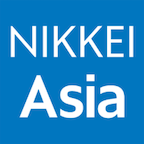Sambamba
Lister
"Working with them is brutal. It's not 996 -- meaning working from 9 a.m. to 9 p.m., six days a week. ... It will literally be 007 -- from midnight to midnight, seven days a week. No days off at all," one Chinese chip engineer told Nikkei Asia. "The contract will be for three years, [but] the majority of people can't survive till renewal."
Huawei building vast chip equipment R&D center in Shanghai
TAIPEI -- Huawei Technologies is building a massive semiconductor equipment research and development center in Shanghai as the Chinese tech titan continues to beef up its chip supply chain to counter a U.S. crackdown.
The center's mission includes building lithography machines, vital equipment for producing cutting-edge chips. Washington's export controls have sharply reduced Huawei's access to this equipment, whose production is dominated by just three companies: ASML of the Netherlands and Japan's Nikon and Canon.
To staff the new center, Huawei is offering salary packages worth up to twice as much as local chipmakers, industry executives and sources briefed on the matter told Nikkei Asia. The company has already hired numerous engineers who have worked with top global chip tool builders like Applied Materials, Lam Research, KLA and ASML, they said, adding that chip industry veterans with more than 15 years of experience at leading chipmakers like TSMC, Intel and Micron are also among recent and potential hires.
Washington's tighter export controls over the past few years have also impacted the job market in China, including by making it more difficult for Chinese citizens to work for foreign chip companies in the country. This has left more top chip talent available for Huawei and other local companies to choose from.
But while Huawei's compensation package is generous, its working culture can be challenging, according to chip industry managers.
"Working with them is brutal. It's not 996 -- meaning working from 9 a.m. to 9 p.m., six days a week. ... It will literally be 007 -- from midnight to midnight, seven days a week. No days off at all," one Chinese chip engineer told Nikkei Asia. "The contract will be for three years, [but] the majority of people can't survive till renewal."
Semiconductor equipment, like chips themselves, have been caught in the crosshairs of U.S. export controls. Washington has lobbied allies Japan and the Netherlands to implement similar restrictions on the export of advanced chip tools to limit China's access to them.
These restrictions have spurred many Chinese chipmakers to seek domestic alternatives wherever possible. Naura, China's leading supplier of semiconductor equipment, has seen its revenue more than quadruple since 2018 and is expected to report another record year in 2023.
Huawei, too, has responded to the U.S. crackdown by aggressively beefing up its domestic capabilities.
Its new R&D center is located in the Qingpu district of west Shanghai, sources briefed on the matter said, on a spacious campus that also houses a major chip development center and the new headquarters of HiSilicon Technologies, Huawei's chip design unit. There are also research centers for wireless technologies and smartphones on the premises.
Total investment for the the entire R&D base will come to about 12 billion yuan ($1.66 billion), according to the Shanghai government, which listed it as one of the city's top projects for 2024.
The campus covers about 224 football fields in area and is almost twice as big as the company's renowned Ox Horn Campus, a European village-style site in the Chinese city of Dongguan. Like Ox Horn, the Shanghai campus will include trains for commuting between buildings in the campus. When completed, it will be able to accommodate more than 35,000 high-tech workers, according to the People's Government of Qingpu District of Shanghai Municipality.
Huawei said it had no comments in response to Nikkei Asia's request for comment on its chip equipment efforts and referred question about its R&D campus to the Shanghai government.

The look of Huawei's Ox Horn Campus in the Chinese city of Dongguan is modeled after a European village. (Photo by Cheng Ting-Fang)
Huawei's R&D spending in 2023 reached a record high of 164.7 billion yuan, representing 23.4% of its total revenue.
Before the U.S. added Huawei to its trade blacklist, the company focused mainly on chip design and partnered with global production partners like TSMC and Globalfoundries for manufacturing. After its access to American technologies was curbed, Huawei turned to Chinese chipmaker SMIC and local chip developers. It is now venturing into chip production itself with partners backed by local governments in multiple Chinese cities, such as Shenzhen, Qingdao and Quanzhou, Nikkei first reported. It has also invested in many local providers of chip materials.
Huawei has been one of the most aggressive Chinese companies in terms of using local suppliers and investing in domestic alternatives, analysts say.
Brady Wang, a semiconductor analyst with Counterpoint, said Huawei has worked hard to localize its chip-related sources and switch to local components from suppliers such as BOE Technology and Omnivision. "They've invested more in HiSilicon and introduced chips for phones and servers," Wang said. "They will strive to localize a greater portion of their semiconductor supply chain. However, realizing these efforts, particularly those related to chip manufacturing and equipment, will be a time-intensive undertaking."

 asia.nikkei.com
asia.nikkei.com
Huawei building vast chip equipment R&D center in Shanghai
TAIPEI -- Huawei Technologies is building a massive semiconductor equipment research and development center in Shanghai as the Chinese tech titan continues to beef up its chip supply chain to counter a U.S. crackdown.
The center's mission includes building lithography machines, vital equipment for producing cutting-edge chips. Washington's export controls have sharply reduced Huawei's access to this equipment, whose production is dominated by just three companies: ASML of the Netherlands and Japan's Nikon and Canon.
To staff the new center, Huawei is offering salary packages worth up to twice as much as local chipmakers, industry executives and sources briefed on the matter told Nikkei Asia. The company has already hired numerous engineers who have worked with top global chip tool builders like Applied Materials, Lam Research, KLA and ASML, they said, adding that chip industry veterans with more than 15 years of experience at leading chipmakers like TSMC, Intel and Micron are also among recent and potential hires.
Washington's tighter export controls over the past few years have also impacted the job market in China, including by making it more difficult for Chinese citizens to work for foreign chip companies in the country. This has left more top chip talent available for Huawei and other local companies to choose from.
But while Huawei's compensation package is generous, its working culture can be challenging, according to chip industry managers.
"Working with them is brutal. It's not 996 -- meaning working from 9 a.m. to 9 p.m., six days a week. ... It will literally be 007 -- from midnight to midnight, seven days a week. No days off at all," one Chinese chip engineer told Nikkei Asia. "The contract will be for three years, [but] the majority of people can't survive till renewal."
Semiconductor equipment, like chips themselves, have been caught in the crosshairs of U.S. export controls. Washington has lobbied allies Japan and the Netherlands to implement similar restrictions on the export of advanced chip tools to limit China's access to them.
These restrictions have spurred many Chinese chipmakers to seek domestic alternatives wherever possible. Naura, China's leading supplier of semiconductor equipment, has seen its revenue more than quadruple since 2018 and is expected to report another record year in 2023.
Huawei, too, has responded to the U.S. crackdown by aggressively beefing up its domestic capabilities.
Its new R&D center is located in the Qingpu district of west Shanghai, sources briefed on the matter said, on a spacious campus that also houses a major chip development center and the new headquarters of HiSilicon Technologies, Huawei's chip design unit. There are also research centers for wireless technologies and smartphones on the premises.
Total investment for the the entire R&D base will come to about 12 billion yuan ($1.66 billion), according to the Shanghai government, which listed it as one of the city's top projects for 2024.
The campus covers about 224 football fields in area and is almost twice as big as the company's renowned Ox Horn Campus, a European village-style site in the Chinese city of Dongguan. Like Ox Horn, the Shanghai campus will include trains for commuting between buildings in the campus. When completed, it will be able to accommodate more than 35,000 high-tech workers, according to the People's Government of Qingpu District of Shanghai Municipality.
Huawei said it had no comments in response to Nikkei Asia's request for comment on its chip equipment efforts and referred question about its R&D campus to the Shanghai government.

The look of Huawei's Ox Horn Campus in the Chinese city of Dongguan is modeled after a European village. (Photo by Cheng Ting-Fang)
Huawei's R&D spending in 2023 reached a record high of 164.7 billion yuan, representing 23.4% of its total revenue.
Before the U.S. added Huawei to its trade blacklist, the company focused mainly on chip design and partnered with global production partners like TSMC and Globalfoundries for manufacturing. After its access to American technologies was curbed, Huawei turned to Chinese chipmaker SMIC and local chip developers. It is now venturing into chip production itself with partners backed by local governments in multiple Chinese cities, such as Shenzhen, Qingdao and Quanzhou, Nikkei first reported. It has also invested in many local providers of chip materials.
Huawei has been one of the most aggressive Chinese companies in terms of using local suppliers and investing in domestic alternatives, analysts say.
Brady Wang, a semiconductor analyst with Counterpoint, said Huawei has worked hard to localize its chip-related sources and switch to local components from suppliers such as BOE Technology and Omnivision. "They've invested more in HiSilicon and introduced chips for phones and servers," Wang said. "They will strive to localize a greater portion of their semiconductor supply chain. However, realizing these efforts, particularly those related to chip manufacturing and equipment, will be a time-intensive undertaking."

Huawei building vast chip equipment R&D center in Shanghai
China tech company spending billions, snapping up talent in battle against U.S. crackdown
